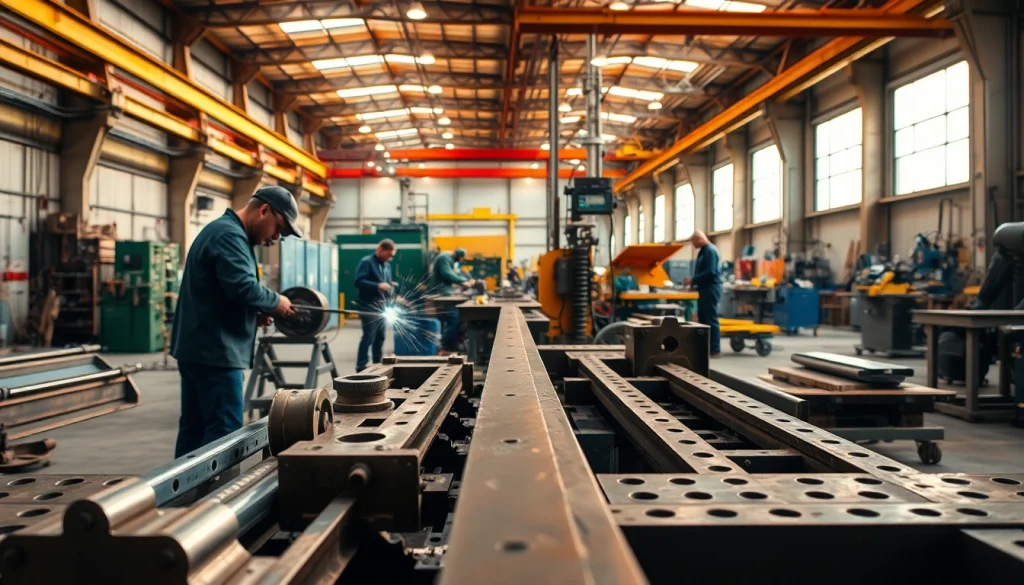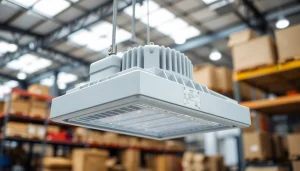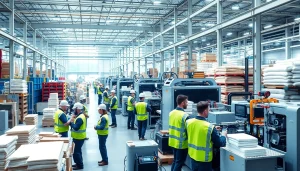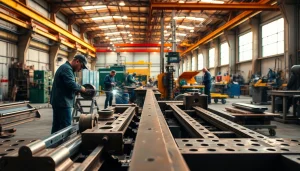Mastering Custom Steel Fabrication Techniques for Diverse Applications

Introduction to Custom Steel Fabrication
In today’s industrial landscape, custom steel fabrication has become an essential component for numerous sectors, from construction and manufacturing to transportation and architecture. The ability to create bespoke steel structures and components not only meets specific project requirements but also optimizes cost and enhances efficiency. This article delves into the intricate world of custom steel fabrication, exploring its various aspects and applications.
Understanding Custom Steel Fabrication
Custom steel fabrication refers to the process of designing and manufacturing steel components tailored to meet the unique specifications of a project. Unlike mass-produced steel products, custom fabrication accommodates specific designs, shapes, sizes, and finishes that standard options may not provide.
Fabricators typically engage in several processes including cutting, bending, welding, and assembly, allowing for a high degree of flexibility and creativity in design. Moreover, technologies such as CNC machining and laser cutting have revolutionized how fabricators operate, bringing a level of precision previously unattainable.
Importance in Various Industries
The versatility of custom steel fabrication has made it invaluable across diverse industries. For instance:
- Construction: Custom steel fabrication provides structural steel components for buildings, bridges, and other infrastructures.
- Manufacturing: It allows the creation of specialized machinery components and tools tailored to specific production needs.
- Transportation: Custom steel parts are crucial for manufacturing vehicles, railings, and even shipping containers.
- Energy: The energy sector utilizes custom steel fabrication for structural frames and components for power plants and renewable energy systems.
Factors Influencing Custom Steel Fabrication
Several factors can significantly influence the custom steel fabrication process. Understanding these factors helps ensure the successful execution of projects:
- Project Specifications: Unique design requirements can affect material choice, fabrication methods, and overall project timelines.
- Budget Constraints: Costs associated with materials and labor can dictate choices made during the fabrication process.
- Lead Times: The urgency of a project can influence production methods, potentially prioritizing speed over customization.
- Regulatory Standards: Adherence to industry regulations and safety standards is vital, impacting material selection and fabrication processes.
Core Techniques in Custom Steel Fabrication
Welding Methods for Custom Steel Fabrication
Welding is a fundamental process in custom steel fabrication, providing the means to join metal components through various techniques, including:
- MIG Welding: Metal Inert Gas (MIG) welding is widely used for its speed and versatility, suitable for various thicknesses and types of steel.
- TIG Welding: Tungsten Inert Gas (TIG) welding offers high precision and control, making it ideal for intricate fabrications and thinner materials.
- Stick Welding: This process is effective in outdoor and wind-blown conditions, suitable for heavy-duty applications due to its robust nature.
Cutting and Shaping Techniques
Cutting and shaping are essential steps in custom steel fabrication, allowing for the customization of steel components. Key techniques include:
- Laser Cutting: Laser technology offers excellent precision and the ability to cut complex shapes with minimal waste.
- Plasma Cutting: This high-speed process is effective for cutting thicker materials, making it prevalent in industrial applications.
- Waterjet Cutting: Using high-pressure water jets, this method ensures the integrity of delicate materials by avoiding heat distortion.
Finishing and Treatment Processes
Finishing processes and surface treatments enhance the appearance and durability of fabricated steel products. Common methods involve:
- Galvanization: Coating steel with zinc protects against corrosion, extending the lifespan of the structure.
- Powder Coating: This process provides a durable, aesthetically pleasing finish that comes in various colors.
- Sandblasting: This technique cleans and prepares the surface for painting or coating by removing impurities and old finishes.
Choosing the Right Materials for Custom Steel Fabrication
Types of Steel Used in Custom Steel Fabrication
Selecting the appropriate steel type is crucial in the custom fabrication process. Generally, various grades and alloys exist, including:
- Carbon Steel: Known for its strength and affordability, ideal for structural applications.
- Stainless Steel: Corrosion-resistant and suitable for environments exposed to moisture or chemicals.
- Alloy Steel: Designed for specific properties such as enhanced toughness or strength at high temperatures.
Factors in Material Selection
Several considerations come into play when selecting materials for custom steel fabrication:
- Mechanical Properties: The strength, ductility, and hardness of the steel should align with the application’s requirements.
- Environmental Resistance: Resistance to rust, corrosion, and high temperatures may dictate material choice.
- Cost: The price of raw materials and fabrication processes needs to fit within the project budget.
Advantages of Different Steel Alloys
The specific advantages of various steel alloys impact their usability in custom fabrication:
- Carbon Steel: High strength and low cost make it versatile for many applications.
- Stainless Steel: Enhanced corrosion resistance and aesthetic appeal make it perfect for architectural and food processing applications.
- Tool Steel: Ideal for products demanding wear resistance, such as cutting tools and dies.
Common Applications for Custom Steel Fabrication
Industrial Applications of Custom Steel Fabrication
Custom steel fabrication is widely utilized in numerous industrial applications:
- Machinery Components: Custom components ensure machinery operates efficiently with minimal downtime.
- Structural Frameworks: Essential for buildings and bridges, providing support and stability.
- Storage Solutions: Custom steel fabrications can create racks, shelves, and containers tailored to specific industrial needs.
Commercial Uses of Custom Steel Fabrication
Beyond industrial applications, custom steel fabrication plays a significant role in commercial settings:
- Architectural Elements: Custom railings, staircases, and facades enhance the aesthetic appeal of buildings.
- Furniture: Custom metal furniture creates a unique style and durable additions to commercial spaces.
- Signage: Custom steel signs offer durability and can be tailored to meet branding requirements.
Residential Custom Steel Fabrication Solutions
In residential applications, custom steel fabrication provides solutions that enhance safety and style:
- Railings and Staircases: Custom fabricated metal railings and stairs offer both safety and an aesthetic touch.
- Gates and Fencing: Custom designs contribute to security while adding visual appeal to properties.
- Outdoor Structures: Custom patio covers, pergolas, and built-in furniture can extend indoor comfort outdoors.
Best Practices for Efficient Custom Steel Fabrication
Workflow Optimization Strategies
Optimizing workflow is essential for enhancing productivity in custom steel fabrication. Strategies can include:
- Lean Manufacturing: Implementing lean principles can reduce waste and improve efficiency.
- Automation: Incorporating automated tools and machinery can speed up production times.
- Team Training: Regular training enhances skill levels, ensuring employees are kept up-to-date with the latest techniques and technologies.
Quality Control Measures in Custom Steel Fabrication
Quality assurance is vital to maintain high standards in custom steel fabrication. Common measures include:
- Inspection Protocols: Regular inspections at various fabrication stages help identify and rectify potential issues early.
- Material Testing: Testing the mechanical properties of materials used ensures they meet project requirements and safety standards.
- Feedback Loops: Collecting feedback from clients and stakeholders aids in continuous improvement.
Future Trends in Custom Steel Fabrication
The landscape of custom steel fabrication is continuously evolving. Emerging trends that are shaping the industry include:
- Sustainability: Increasing focus on eco-friendly materials and processes drives innovation toward sustainable fabrication techniques.
- Advanced Technologies: The integration of AI and machine learning in design and manufacturing processes can optimize output and reduce costs.
- Customization and Personalization: As consumer demand for unique products grows, the trend towards offering highly customized fabrications will likely continue.







